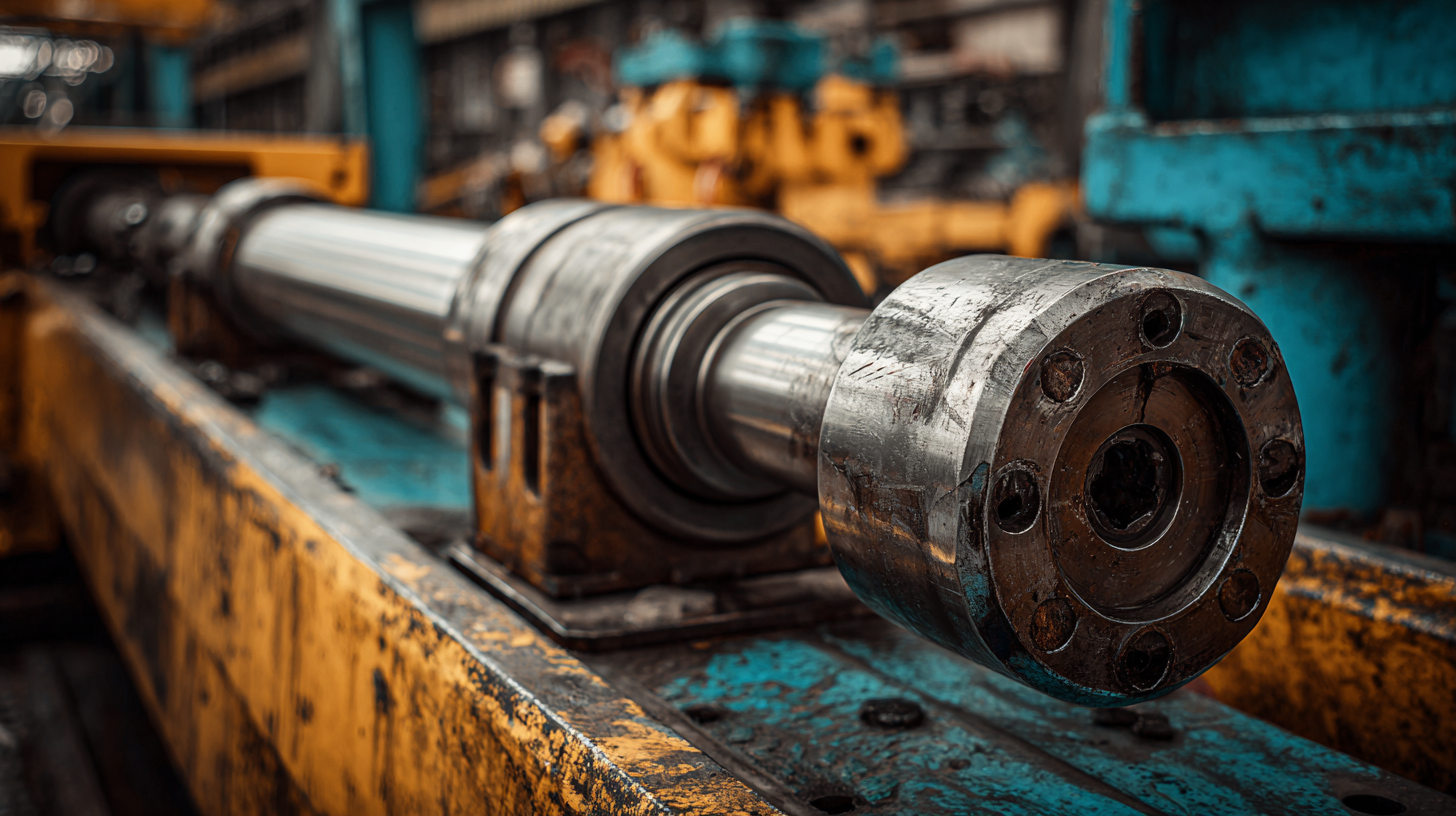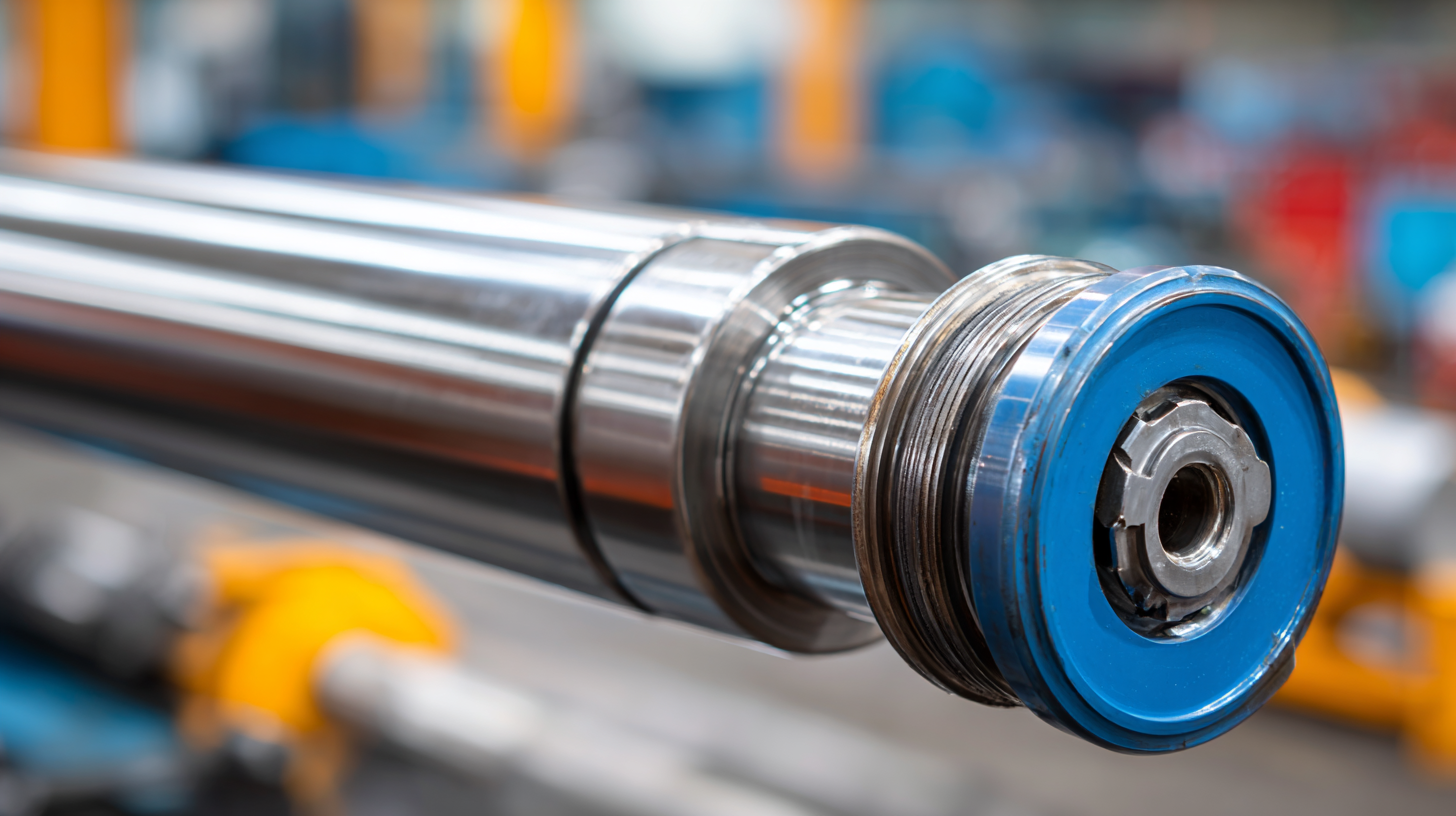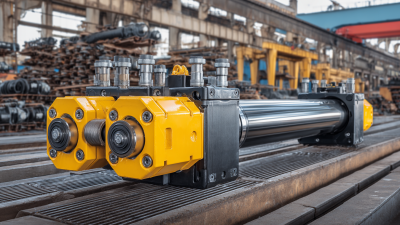 +86-13349293098
+86-13349293098
Leave Your Message
-
 Contact Phone
Contact Phone -
 Contact WhatsApp
Contact WhatsApp -
 Contact Email
Contact Email



In the realm of modern machinery, the Hydraulic Cylinder Shaft stands as a fundamental component that ensures the efficient operation of various heavy-duty applications. According to the International Society of Automation, the hydraulic systems market is anticipated to reach $75 billion by 2025, indicating a robust demand for reliable hydraulic components.
The hydraulic cylinder shaft plays a pivotal role in facilitating the controlled linear motion necessary for tasks ranging from construction to manufacturing.

Industry expert Dr. Emily Sinclair, a renowned authority on hydraulic systems, asserts, "The performance and longevity of hydraulic machinery heavily depend on the quality and design of the hydraulic cylinder shaft." This quote underscores the importance of investing in high-quality shafts to enhance operational efficiency and minimize downtimes.
As we delve into the nuances of hydraulic cylinder shafts, we will explore their design considerations, maintenance practices, and innovations that are shaping the future of hydraulic technology. Understanding these elements is crucial for ensuring that machinery operates at peak performance, ultimately driving productivity in various industrial sectors.
Hydraulic cylinder shafts play an essential role in various industrial applications by facilitating smooth and effective operation of machinery. These shafts are crucial components that transmit force and motion within hydraulic systems. Their design and material selection directly influence the performance and reliability of heavy equipment used in construction, manufacturing, and automotive sectors. By enabling precise movements and stability, hydraulic cylinder shafts contribute significantly to operational efficiency and productivity.
In industries where heavy loads are frequently handled, the durability and strength of hydraulic cylinder shafts become paramount. Constructed from high-grade materials, these shafts resist wear and deformation under extreme conditions, ensuring longevity and reducing the risk of failure. Moreover, advancements in engineering have led to innovations in hydraulic shaft design, allowing for enhanced performance and adaptability in a wide range of applications. As industrial processes become more complex, understanding the critical importance of hydraulic cylinder shafts will continue to be vital in driving innovation and maintaining operational excellence.
Hydraulic cylinder shafts are integral components in modern machinery, tasked with transferring force and motion. For optimal performance, several key design features are essential. Firstly, the material selection significantly influences durability and efficiency. Research indicates that materials such as high-strength carbon steels, which can handle load stresses exceeding 600 MPa, are often preferred. These materials not only provide the requisite strength but also enhance resistance to fatigue, which can extend the life cycle of hydraulic systems.
Another critical feature is the geometry of the shafts, including the shaft diameter and surface finish. A study by the American Society of Mechanical Engineers (ASME) highlights that precisely sized diameters improve load distribution and reduce the risk of deformation under stress. Additionally, a polished surface finish minimizes friction, enabling smoother movement and higher efficiency in operation. Furthermore, innovative designs incorporating hard coatings can significantly reduce wear, thereby enhancing overall reliability in high-pressure applications.

 Hydraulic cylinder shafts are critical components in various modern machinery, playing a pivotal role in the transmission of mechanical power. The materials used in manufacturing these shafts are crucial for their performance, durability, and resistance to wear and tear. Typically, manufacturers opt for materials such as carbon steel, stainless steel, and hardened steel, each offering unique benefits suited for different operating conditions.
Hydraulic cylinder shafts are critical components in various modern machinery, playing a pivotal role in the transmission of mechanical power. The materials used in manufacturing these shafts are crucial for their performance, durability, and resistance to wear and tear. Typically, manufacturers opt for materials such as carbon steel, stainless steel, and hardened steel, each offering unique benefits suited for different operating conditions.
Carbon steel is widely favored for its excellent strength-to-weight ratio and cost-effectiveness. It can withstand significant stress, making it an ideal choice for hydraulic applications that require robustness without breaking the bank. On the other hand, stainless steel is preferred in environments where corrosion resistance is paramount, such as in marine or chemical applications. Its ability to maintain structural integrity under harsh conditions ensures longevity. Lastly, hardened steel, often treated for increased hardness, is employed in scenarios where high wear resistance is essential, providing reliable performance even under the most demanding conditions. Choosing the right material is vital for optimizing the functionality and lifespan of hydraulic cylinder shafts in modern machinery.
Maintaining hydraulic cylinder shafts is crucial for the longevity and performance of modern machinery. According to a recent report from the International Journal of Hydraulic Engineering, over 30% of hydraulic system failures are attributed to improper maintenance of cylinder components. Regular inspections that focus on the shafts can significantly reduce wear and tear, ensuring that they operate efficiently under demanding conditions.
Implementing best practices for maintenance includes regular cleaning to remove contaminants that can cause erosion and pitting, which has been shown to decrease the lifespan of hydraulic components by as much as 50%. Furthermore, lubricating the shafts adequately with high-quality grease intervals helps to minimize friction and extend operational life. Data from the Hydraulic Institute highlights that machinery using well-maintained hydraulic systems can achieve a performance efficiency of up to 90%, compared to only 60-70% for those with neglected components. By prioritizing these maintenance strategies, operators can enhance the reliability and durability of hydraulic cylinder shafts, ultimately leading to improved machinery performance and reduced operational costs.
This bar chart illustrates the critical factors impacting the lifespan of hydraulic cylinder shafts. Regular maintenance and material quality are paramount for optimal performance, while temperature stability plays a significant role as well.
Innovations in hydraulic cylinder shaft technology have led to significant improvements in efficiency and performance across various industrial applications. Advances in materials science have introduced high-strength alloys and composites that enhance the durability and fatigue resistance of shafts. These innovative materials allow for lighter designs that not only reduce the overall weight of the machinery but also improve energy consumption rates by requiring less power to operate.
Furthermore, the implementation of precision machining techniques has revolutionized the manufacturing process of hydraulic cylinder shafts. These techniques ensure tighter tolerances and superior surface finishes, which reduce friction and wear during operation. Additionally, the integration of smart sensors into hydraulic cylinders provides real-time data, enabling predictive maintenance and minimizing downtime through proactive measures. Collectively, these advancements position hydraulic cylinder shafts as crucial components driving efficiency and reliability in modern machinery.
| Feature | Description | Impact on Efficiency | Recent Innovations |
|---|---|---|---|
| Material Composition | Use of high-strength steel and composites | Increased durability and reduced weight | Development of corrosion-resistant materials |
| Surface Treatment | Use of hard chrome plating and ceramic coatings | Enhances wear resistance and operational lifespan | Introduction of nano-coatings for superior properties |
| Sealing Technology | Advanced sealing systems to prevent leakage | Improves operational efficiency and minimizes downtime | Smart seals that adapt to temperature variations |
| Design Innovations | Improved geometry for better load distribution | Reduced stress concentration leads to higher reliability | Use of 3D printing for complex designs |
| Hydraulic Fluid Compatibility | Enhanced compatibility with a range of hydraulic fluids | Increased operational flexibility in various environments | Development of bio-based hydraulic fluids |






